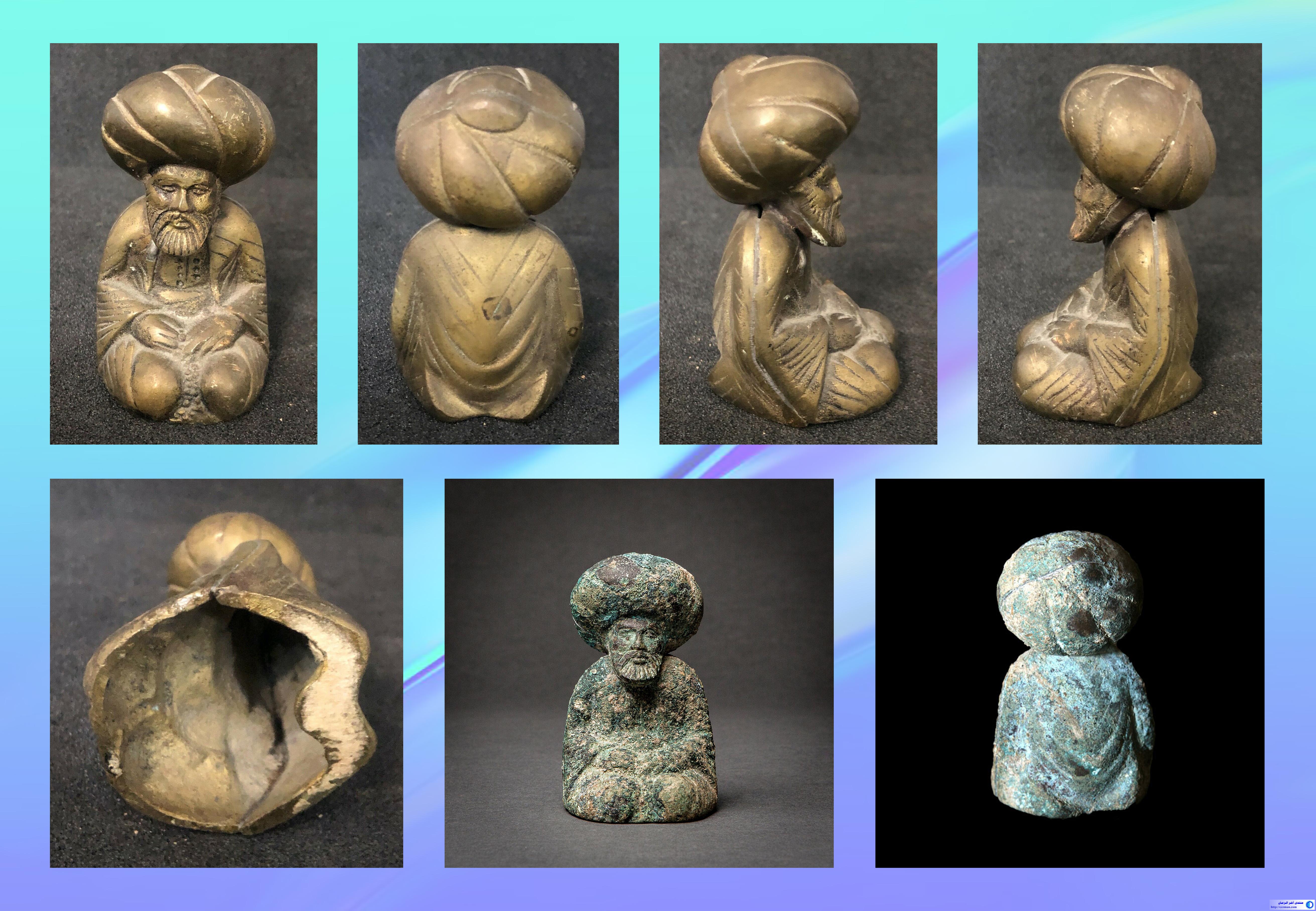بسم الله الرحمن الرحيم
هل بالفعل كان لهارون الرشيد تمثال يستخدم في لعبة الشطرنج؟

This attractive sculpture is a chess piece from Persia. The caliphate of Harun al Rashid marked a cultural high point in the administrations of the Abbasid caliphs in the latter half of the 1st millennium. Literally translated as “Aaron the Just/Upright/Rightly-Guided”, he was born in 763 and took over the caliphate in 786. By the time he died in 809, his kingdom was renowned for its liberalism. While in many respects rather warrior-like in demeanour and deed, he was also a civilised and cultured man whose lavish court lifestyle is said to be the inspiration behind the Tales of 1001 nights. He founded a library, encouraged scientific endeavours, and created an environment conducive to artistic and cultural production.
Strongly influenced by his mother, al-Khayzarun (a slave girl from Yemen who attracted the favour of his father, al-Mahdi), his reign was marked by strong leadership that sometimes led to draconian measures against those who displeased him. Jafar, a court notable of the Barmakid family, was executed, split into two and then impaled on either side of a bridge in Baghdad for having entered his presence uninvited, although it is also possible that he was angered at the Barmakids’ habit of ruling without consultation with him. He chose good replacements for the Barmakid ministers, greatly improving the efficiency of the administration, and channelled the massive tributes obtained from local rulers into public architecture and social development. As a soldier he was honourable yet ruthless, showing great leadership of his army of almost 100,000 when he was in his late teens. He inclined to liberality regarding corruption, and personally investigated claims of financial misdeeds by his own governors on at least one occasion, returning monies wrongly levied and imprisoning the entire family of the man involved. Nonetheless he was very involved with the arts, invited foreign dignitaries to the royal court and even sent messages and gifts – notably an elephant named Abul-Abbas – to Charlemagne. He is said to have loved poetry, singing, horse-racing and literature, and to have been an excellent player of chess, which brings us to the present piece.
The figure depicts a seated man of middle years representing Harun himself. He is of a decidedly distinguished bearing. Wearing an exaggeratedly oversized turban, his bearded face is cast in low relief, and has been carefully cleaned by our restorers to show the lustrous patina of the metal. The figure is dressed in a long robe which covers his arms to his wrists; the hands are folded reflectively in the lap. The detailing of the robe, its folds and creases, are marked out on the reverse of the figure. The turban is decorated with swirled lines around a central apex. It is a two-piece casting that is joined around the perimeter of the object when viewed from the front. The interior is hollow, with a flange that was probably used for attaching the piece to a base or some other substructure. In any case, however, this is a very unusual and desirable piece from a period of true flowering in Central Asia, and deserves a place in any significant collection of Central Asian antiquities.